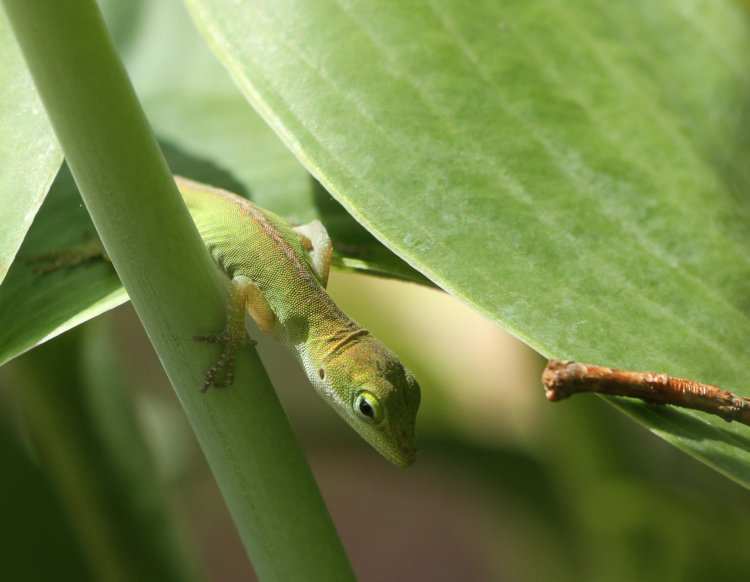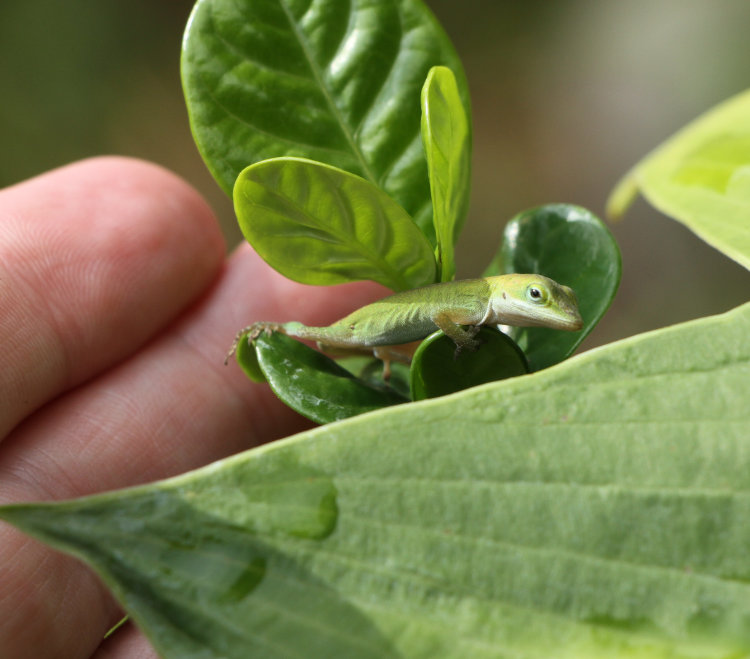
Had to feature a sudden find late this morning – if this guy had held still, I would have easily missed it, especially since I’d about given up on seeing one this year. This is a newborn Carolina anole (Anolis carolinensis,) scampering around on one of the hosta plants, appearing at a time when even the adults could barely be found. This might have come about because we had some heavy rains in the past day and the temperature finally dropped to, “Not Deadly,” but I wasted no time in trying to get a selection of pics, including some scale shots. Afterwards, I measured the stem that the anole is clutching, and it’s 5mm in thickness; the twig off to the right is actually just some pine needles. Though we can do even better than this.

Not only did it let me get away with slowly sliding my fingers close to it, for a moment it looked like it was about to jump onto them, then appeared to reconsider that idea. This is in a line along the front walk that has two gardenias (one of which is seen here, the roundish leaves,) two hostas, and two butterfly bushes – in other words, happy hunting grounds for little anoles, and they’ve used it as such all last summer. It’s great to see one doing so again.

Now, I say “newborn,” but I honestly don’t know how new; I suspect that they remain sequestered in leaves for a while after hatching, but they’re largely independent and the mother doesn’t feed them at all. According to Wikipedia, egg development in the mother takes two to four weeks, and incubation after laying from five to seven, so we’re within the scheduled period – maybe a little later if this one was close to laying eggs, but that pic was around the back of Walkabout Estates fairly distant from the newborn, so not likely the same clutch. Overall length is roughly 55-60mm – not far from newborn, at least.
But we need a better look at that detail.

It looks like it’s napping here, and might well be – I’ve seen the behavior countless times, where right in the middle of scampering around in their slightly manic way, they pause and simply close their eyes, even when they know I’m nearby. It only lasts for a few seconds and I have no idea of the purpose – maybe it’s an attempt to Force Hurl me away. Still, look at that wonderfully textured skin.
I may dribble a few drops of the hummingbird food on the leaves near here to attract the ants, because that’s what these guys like to eat, among other things. I do what I can for my subjects.



















































